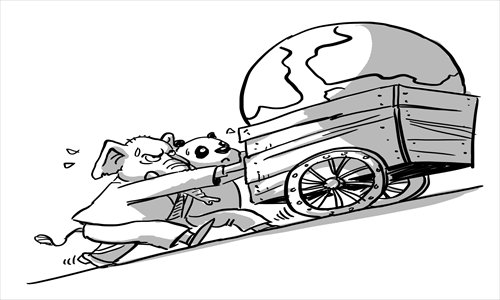Sino-Indian institutions can carry forward Li’s vision of shared past

The relationship between China and India has a direct bearing on the peace and stability of Asia, and how they shape their bilateral relationship has critical significance for the regional order in Asia. Whether the relationship will be cooperative or competitive depends to a large extent on how the leadership on both sides frames their mutual engagement.
Recently, in his first state visit to India after taking over as premier, Chinese Premier Li Keqiang highlighted the importance of cooperation as a framework of engagement between China and India.
In an op-ed published in The Hindu, a major Indian newspaper, Li highlighted the common cultural connections between China and India, noting the travels of Fahien and Huen Tsang to India.
His stress on the need to cooperate was based on the common challenges that both countries face internally. And any internal development within China and India is possible only if both sides ensure through dialogue and cooperation that South Asia and the Asia-Pacific region remain free of inter-state conflicts and tensions. Indian leaders also reciprocated in similar tones with Prime Minister Manmohan Singh prioritizing the critical necessity to cooperate with China and build mutual trust.
Three major areas were highlighted in the meetings between Li and Singh as priority areas for China and India in their bilateral relationship: build mutual trust; intensify cooperation; and develop a common vision for the future.
However, one of the major obstacles that have created distrust and wariness between the two sides is the unresolved border dispute and its impact on the bilateral relationship.
The unresolved border has also tended to create mistrust when it comes to a smooth conduct of economic relationships. For instance, Chinese investments in Indian telecommunications and infrastructure projects run into rough weather due to Indian security concerns over the border.
While both countries have signed two critical agreements on maintaining peace and tranquility along the Line of Actual Control in 1993 and 1996, border tensions tend to spill over into the larger strategic discourse on China and India especially among the Indian strategic community and the media.
The "special representatives" for the border negotiations between China and India have been tasked to speed up demarcating and delineating the border. But given the media hype in India over Chinese incursions, it is an urgent requirement to also establish stronger societal contacts between China and India at a Track II level which could address the difficult issues over the border within a framework of dialogue.
The border negotiations should also be institutionalized within a joint border management institution which should ideally enjoy expertise on negotiations and on the historical and contemporary dimensions of the dispute. This creates know-how and objectivity.
This border management institution should also enable greater transparency with regard to the deployment of troops in the China-India border areas, as well as patrolling. While the existing mechanisms like the 1993 and 1996 agreements create a guiding framework to resolve differences, they are limited in their ability to address public fears and concerns especially among those residing near the borders.
Li's op-ed stated that "the world looks to Asia to be the engine driving the global economy. This would be impossible without the two powerhouses of China and India." He went on to state that world peace depends on China and India resolving their border dispute.
The time has arrived for both countries to carry forward the momentum generated by Li's visit to India and create the institutional mechanisms that would streamline the negotiations at the border. This should be supported by greater social contact in order to create the foundation for a process of trust building to unfold.
The author is a senior fellow at the United States Institute of Peace, Washington, DC, and a research fellow at the Institute for Defence Studies and Analyses, New Delhi. opinion@globaltimes.com.cn